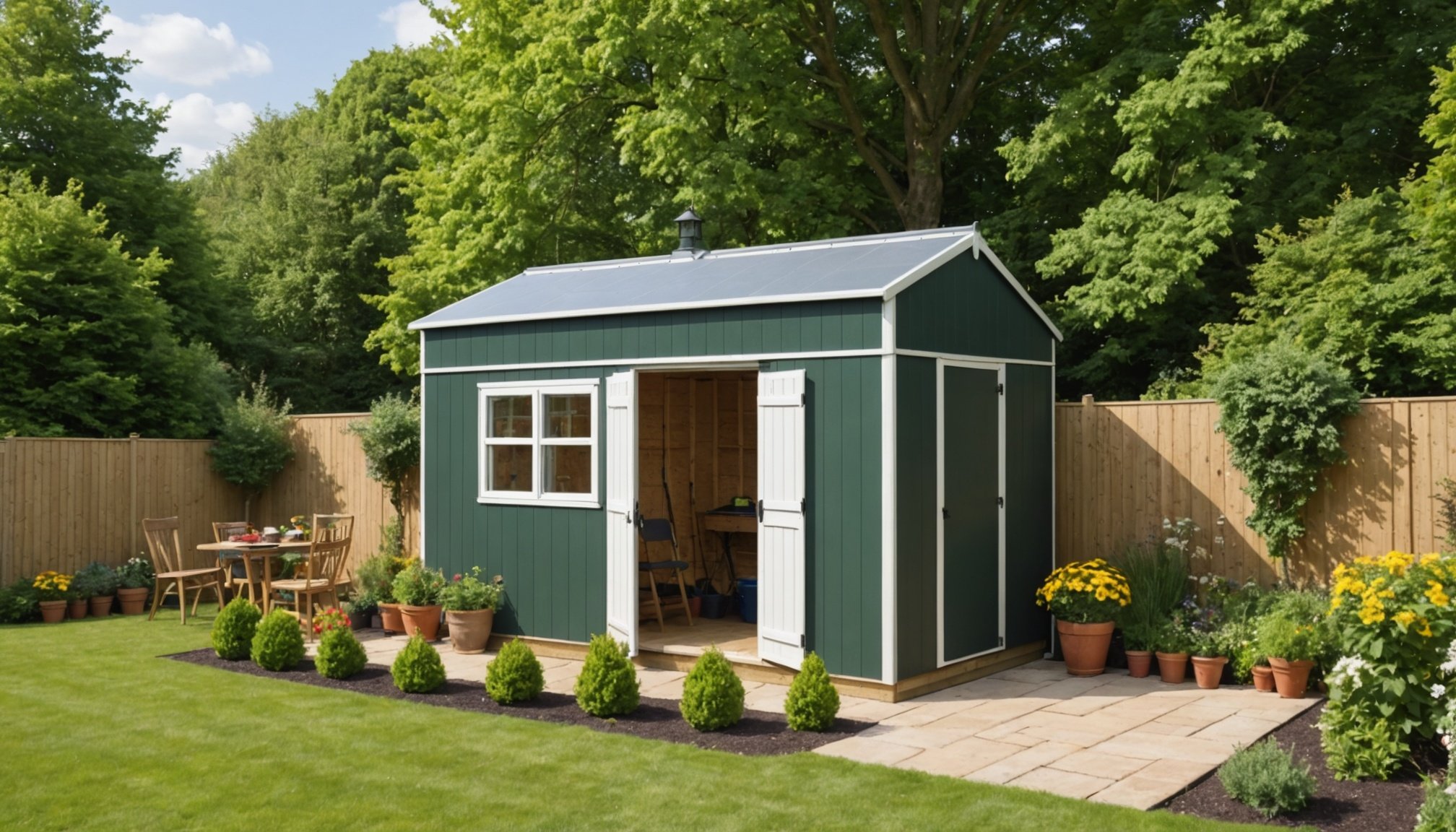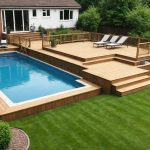Understanding the Importance of Insulation for Garden Sheds
Ensuring adequate insulation for your garden shed is vital for a variety of reasons. One primary advantage is maintaining a stable temperature control inside the shed, regardless of shifting weather conditions outside. By moderating the internal climate, proper insulation prevents extreme temperatures, making the shed suitable for storing delicate items or creating a comfortable workspace.
Furthermore, improving your garden shed’s energy efficiency can lead to significant cost savings. Efficient insulation reduces the need for additional heating or cooling devices, consequently impacting energy consumption positively. As a result, you can enjoy lower utility bills while contributing to a more sustainable environment.
Cela peut vous intéresser : Ultimate Guide to Thriving Tomato Cultivation in Your UK Conservatory
Good insulation enhances the year-round usability of garden sheds. Instead of being limited to milder seasons, insulated sheds enable diverse activities throughout the entire year. Whether using the shed as a workshop, a craft room, or simply for storage, maintaining controlled conditions is essential for preserving both comfort and the quality of stored items. Taking these benefits into account, prioritizing insulation when designing or upgrading your garden shed can significantly add to its functionality and cost-effectiveness.
Affordable Insulation Materials for Garden Sheds
When considering affordable insulation for your garden shed, it’s essential to explore various insulation materials to identify the most cost-effective solutions that meet your specific needs.
Sujet a lire : Discover the UK’s Top Rapid-Growing Hedge Varieties for Ultimate Privacy!
Common Insulation Materials and Their Costs
-
Fiberglass: This is one of the most commonly used insulation materials due to its affordability and effectiveness. Available in batts and rolls, fiberglass insulation costs approximately £0.50 to £1 per square foot. It’s easy to install and provides good thermal retention.
-
Foam Boards: Foam boards offer excellent insulation properties and are relatively cheap, priced around £1.20 to £1.50 per square foot. Ideal for more precise fits, they are a bit more expensive than fiberglass but cleaner to install.
-
Reflective Foil: Costing between £0.70 and £1.00 per square foot, reflective foil insulation is perfect for hot climates, as it reflects heat away from the shed. It’s light and easy to handle but works best when paired with another insulation type.
Understanding these cost-effective solutions can greatly enhance the energy efficiency of your garden shed without breaking the bank. Exploring these insulation materials provides diverse options to ensure your shed remains ideal for use throughout the year.
DIY Insulation Installation Tips
Installing insulation in your garden shed can significantly improve its functionality. Here’s a step-by-step guide to help you with your DIY insulation project.
Preparation
Begin by gathering essential tools and materials such as insulation rolls, a utility knife, protective gear, a staple gun, and a measuring tape. These items will aid in a smooth installation process and ensure safety. Make sure to measure your shed accurately to purchase the correct amount of insulation.
Installation
-
Frame Inspection: Ensure that the garden shed’s frame is in good condition. Any damage or moisture issues should be addressed before starting insulation.
-
Cutting Insulation: Carefully cut the insulation to fit between the shed’s wall studs. Use a utility knife for clean cuts and a precise fit.
-
Positioning and Securing: Place the insulation snugly between the studs. Secure it with a staple gun, ensuring it covers all cavity spaces effectively.
Pitfalls to Avoid
One common pitfall during the installation is using the wrong type of insulation. Choose a material suitable for the climate and your shed’s use. Avoid compressing the insulation too tightly, as this can reduce its effectiveness. Ensure all seams are covered and sealed to prevent air leaks. With these tips, your garden shed improvement will become a success.
Local Product Recommendations for UK Homeowners
Improving energy efficiency in your UK home involves choosing the right materials. Whether you’re selecting insulation products or enhancing your garden shed, opting for local suppliers can be advantageous.
Best Retailers for Insulation Materials
When it comes to sourcing UK insulation products, several local suppliers stand out. Wickes, a well-known brand, offers a variety of options. You can also find excellent choices at B&Q, which stocks versatile and durable insulation materials. These retailers not only provide quality products but also expertise in guiding your home improvement choices.
Comparing Prices and Quality of Local Products
Pricing and product quality can vary significantly. Wickes and B&Q generally offer competitive prices, but it’s wise to compare their ranges. Focusing on product specifications can ensure you’re investing in long-lasting and effective solutions for your home.
Online vs Offline Purchasing: Pros and Cons
Deciding between online or offline purchases for insulation products and garden shed enhancements involves weighing convenience against the tactile experience. Online shopping provides ease and often broader choices, whereas visiting a physical store enables you to physically inspect the materials, gaining a clearer idea of their practicality and durability. Each option has unique benefits, making it important to consider your specific needs.
Energy-Saving Statistics and Impact of Insulation
Understanding how insulation enhances energy efficiency in garden sheds can be enlightening, especially in the UK climate. Insulated garden sheds can lead to significant energy savings, resulting in lower utility bills for homeowners.
Climatic Influence Across Regions
The variation in the UK climate influences the energy efficiency potential of insulation. For instance, Southern England experiences milder winters compared to Scotland. Thus, the insulation impact can be more pronounced where temperatures plummet. Such climate differences should guide insulation choices, tailoring solutions to specific weather patterns.
Long-Term Savings and Benefits
Investing in quality insulation presents long-term benefits beyond immediate energy savings. Well-insulated sheds maintain a more consistent temperature, which can extend the lifespan of stored items and reduce energy consumption for heating or cooling. Understanding these statistics can equip you to make informed decisions about your shed insulation, balancing initial costs with potential financial savings over time.
By incorporating these insights, you ensure that your garden shed isn’t just an outdoor structure but also a sustainable and cost-effective addition to your home. The holistic approach to energy efficiency further contributes to broader environmental conservation efforts across the nation.
Challenges in Insulating Garden Sheds
Garden sheds can present unique insulation challenges due to various factors such as design, climate, and materials. Identifying these common issues is critical for effective garden shed maintenance.
One typical challenge is dealing with sheds that have non-standard framing and gaps. These irregularities can make it hard to fit insulation materials snugly, leading to poor thermal efficiency. To overcome this, consider using flexible insulation options like spray foam, which expands to fill gaps.
Another common issue is moisture accumulation, which can degrade insulation over time and promote mould growth. Utilizing moisture barriers or installing vapour-retardant insulation can mitigate this. Choosing the right insulation material also plays a crucial role; materials like closed-cell spray foam offer superior moisture resistance compared to traditional fibreglass.
Once you’ve addressed these initial challenges, maintaining this new efficiency involves regular inspections. Look for signs of wear and tear, such as sagging insulation or mildew, which can compromise insulation effectiveness. Prompt repairs can extend the life of your insulation and keep your garden shed comfortable throughout the year.
Ensuring a well-insulated shed means understanding and addressing these challenges proactively. With the right solutions, you can maintain optimal conditions for your equipment and activities year-round.











